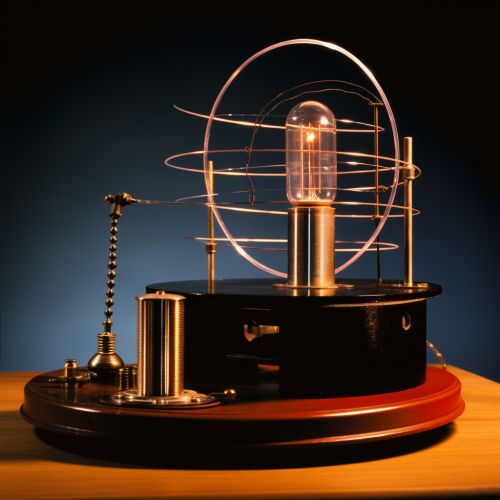Faraday's law of electromagnetic induction
Introduction
Faraday's law of electromagnetic induction is a fundamental principle in the field of electromagnetism that describes how a change in a magnetic field can induce an electric current in a circuit. Named after the British scientist Michael Faraday, who formulated it in 1831, the law has profound implications in many areas of physics and engineering, including electric power generation and wireless communication.


Background
Michael Faraday, a self-taught scientist, made many significant contributions to the field of electromagnetism. His experiments on electromagnetic induction, which led to the formulation of Faraday's law, marked a major milestone in the history of physics. Faraday's law laid the groundwork for the development of electric generators, transformers, and many other devices that are integral to modern life.
Statement of the Law
Faraday's law of electromagnetic induction states that the electromotive force (EMF) induced in a circuit is directly proportional to the rate of change of magnetic flux through the circuit. In mathematical terms, this can be expressed as:
- EMF = -dΦ/dt
where Φ is the magnetic flux and t is time. The negative sign in the equation comes from Lenz's law, which states that the induced EMF will always work to oppose the change in flux that produced it.
Magnetic Flux
Magnetic flux, denoted by the Greek letter Φ, is a measure of the total magnetic field passing through a given area. It is a scalar quantity and is defined as the dot product of the magnetic field vector and the area vector. The unit of magnetic flux in the International System of Units (SI) is the weber (Wb).
Electromotive Force
Electromotive force (EMF) is a measure of the energy provided by a source of electrical energy, such as a battery or a generator. Despite its name, EMF is not a force but a potential, or energy per unit charge. It is measured in volts (V) in the SI system.
Applications
Faraday's law of electromagnetic induction has numerous applications in various fields of science and engineering. Some of the most notable applications include:
- Electric generators: An electric generator is a device that converts mechanical energy into electrical energy. This is achieved by rotating a coil in a magnetic field, which induces a current in the coil according to Faraday's law.
- Transformers: A transformer is a device that changes the voltage of an alternating current. It consists of two coils of wire, known as the primary and secondary coils, wound around a common iron core. When an alternating current is applied to the primary coil, it creates a changing magnetic field that induces a current in the secondary coil.
- Wireless charging: Wireless charging technology, such as that used in some smartphones and electric cars, relies on the principle of electromagnetic induction. A charging pad contains a coil that creates a changing magnetic field when an alternating current is applied. This induces a current in a second coil in the device to be charged, providing it with power.
- Magnetic resonance imaging (MRI): MRI is a medical imaging technique that uses a strong magnetic field and radio waves to generate images of the body. The principle of electromagnetic induction is used to detect the radio signals emitted by certain types of atoms when they are exposed to the magnetic field.
